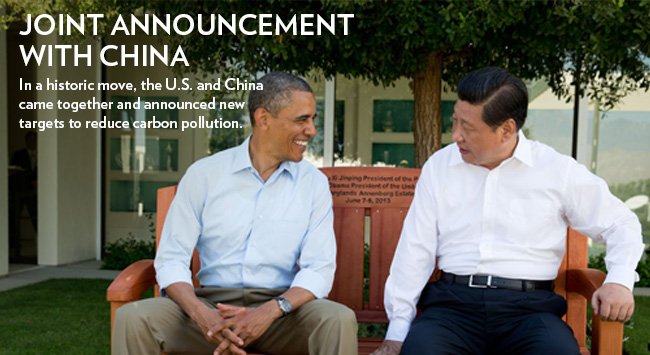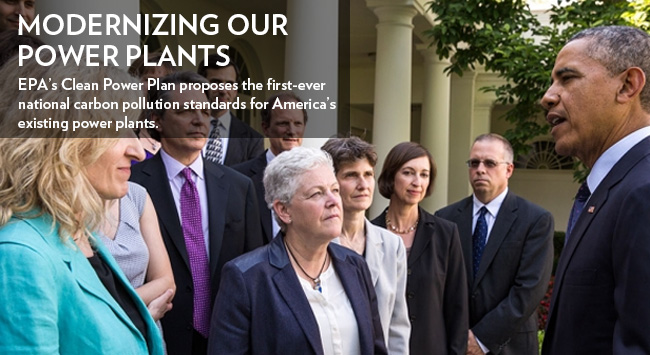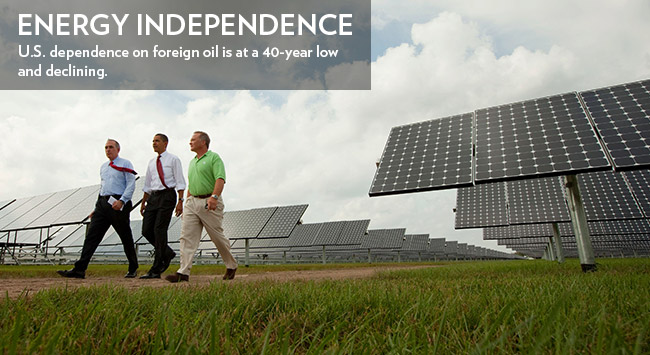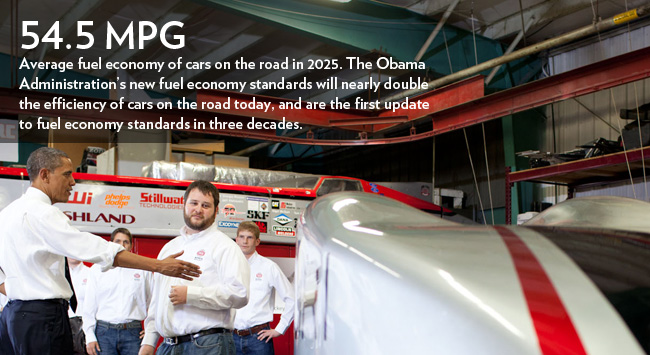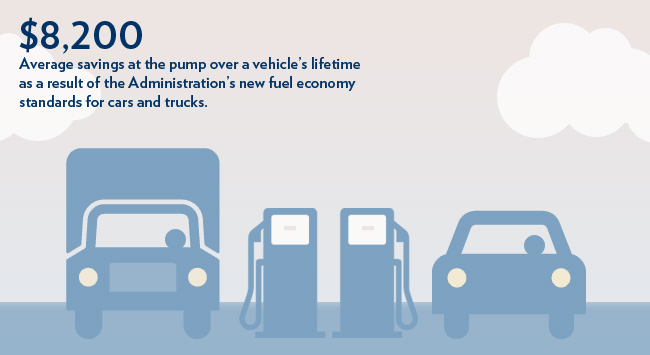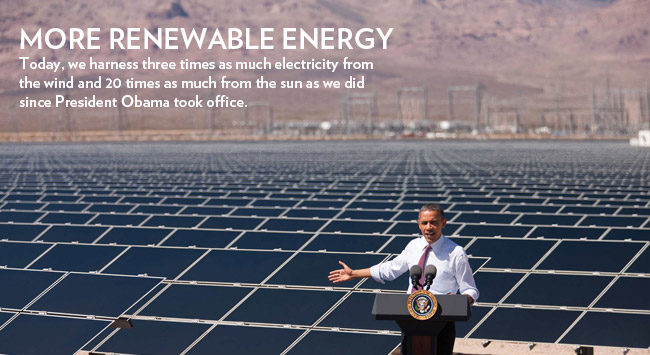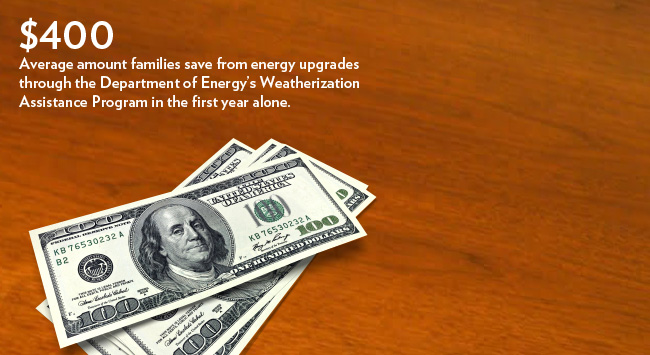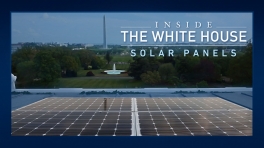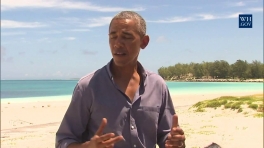Advancing American Energy
Advancing American Energy
President Obama’s All-of-the-Above Energy Strategy is making America more energy independent and supporting jobs. Since the President took office, domestic energy-related emissions have fallen to their lowest level in 20 years, and our dependence on foreign oil is at a 40-year low — and declining. America is producing more oil, gas, and renewable energy, and the U.S. is becoming more energy efficient overall. These trends are increasing our energy security, cutting our carbon pollution, and enhancing our economic growth.
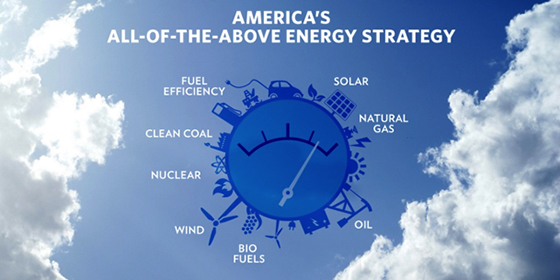
The All-of-the-Above Energy Strategy

We're importing less foreign oil than we're producing domestically.
View the Graphic
Reducing Our Dependence on Foreign Oil
Our all-of-the-above energy strategy aims to harness American innovation and develop a diverse portfolio of American-made energy. We are safely and responsibly developing our energy resources while advancing cleaner forms of energy, such as natural gas and renewables. In November 2013, America hit a milestone of energy independence: For the first time in nearly two decades, the U.S. produced more oil domestically than it imported from foreign sources. And the U.S. is now the number-one natural gas producer in the world.
Thanks in part to these initiatives, America’s dependence on foreign oil is at a 40-year low — and declining. As we decrease our carbon emissions, our economy continues to grow. Our all-of-the-above approach is advancing our energy independence, supporting American jobs, and building the foundation for a clean-energy economy.
Safe and Responsible Domestic Oil and Gas Production
In 2010, in response to the Deepwater Horizon oil spill in the Gulf of Mexico, the Obama administration launched the most aggressive and comprehensive reforms to offshore oil and gas regulation and oversight in U.S. history and put in place new safeguards to protect the environment. These measures help to ensure that our nation can continue to safely and responsibly develop offshore energy resources. The Administration continues to develop and implement a series of standards that will make oil and gas production and transportation safer, including in hydraulic fracturing, arctic drilling, and rail safety.
Carbon Capture and Sequestration Technologies
Continued progress in reducing pollution to improve public health and the environment can be accomplished while supplying the reliable, affordable power needed for economic growth and advancing cleaner energy technologies such as carbon capture and sequestration (CCS). CCS is technologically feasible for implementation at new coal-fired power plants, and its core components — carbon dioxide capture, compression, transportation, and storage — have been implemented successfully at commercial scale.
As part of the President’s Climate Action Plan, the U.S. has invested several billions of dollars into the research and development of CCS technologies, including those aiming to develop innovative, second-generation technologies that will help improve the efficiency and drive down the costs of carbon capture processes for new and existing coal-fired power plants.
Advancing Clean Energy
President Obama has also taken an all-in approach to innovation that starts with a strong commitment to basic and applied energy. That is why this Administration has made the largest investment in clean energy in American history and has launched several initiatives to advance clean energy deployment. Since President Obama took office, the U.S. has increased solar electricity generation by more than twenty-fold, and tripled electricity production from wind power.
Building on the progress of the first term, this Administration continues to take new action to drive clean, American-made energy. Through initiatives such as public-private partnerships and renewable energy projects on public lands, we are on track to meet our goals of installing 100 megawatts of renewable capacity across federally subsidized housing by 2020, permitting 10 gigawatts of renewable projects on public lands by 2020, deploying 3 gigawatts of renewable energy on military installations by 2025, and doubling wind and solar electricity generation in the United States by 2025.
The President called on Congress to make the renewable energy Production Tax Credit permanent and refundable, which will provide incentive and certainty for investments in new clean energy. Instead of continuing century-old subsidies to oil companies, the President believes that we need to invest in the energy of the future.
And we’ve seen progress: Only four years ago, President Obama announced SunShot — a goal to make solar energy cost-competitive with traditional energy sources by the end of the decade. Today, U.S. solar is more than 60 percent of the way there. The cost of geothermal and advanced biofuels is also dropping, and since 2008, the cost of manufacturing advanced electric vehicle batteries has dropped by more than 65 percent. Additionally, in May 2014, the Obama administration launched a process for securing commitments from the public and private sectors to cut energy waste and deploy more renewable energy.
Advancing Energy Efficiency
Cutting our energy waste is one of the fastest, easiest, and cheapest ways to create jobs, save families money, and cut down on harmful carbon pollution. The Obama administration has taken several actions that advance energy efficiency in our vehicles and homes. Through partnerships with rural electric cooperatives, home efficiency upgrades, and private-sector partnerships such as the President’s Better Buildings Challenge, America has been able to cut its carbon emissions, create jobs, and save families hundreds of dollars at the pump and on their utility bills every year. In fact, since President Obama took office, U.S. oil demand has declined, in part because of these efficiency initiatives.
Additionally, DOE develops energy conservation standards for appliances and equipment, which have cut consumers’ electricity bills by hundreds of billions of dollars. Taken together, the final energy conservation standards completed during this Administration add up to more than 2 billion metric tons of carbon emissions by 2030, and we are on track to meet the Climate Action Plan’s goal of cutting 3 billion metric tons of energy waste by 2030.
Developing Clean Fuels
Biofuels are a key component of President Obama’s all-of-the-above energy strategy and play an important role in reducing America’s dependence on foreign oil. The Obama administration has supported research and engaged in public-private partnerships to pursue new innovations in biofuels technologies, increase production of U.S. biofuels, strengthen American energy security, and create jobs.
Investing in Coal Communities, Workers, and Technology: The POWER+ Plan
The United States is undergoing a rapid energy transformation, particularly in the power sector. Booming natural gas production, declining costs for renewable energy, increases in energy efficiency, flattening electricity demand, and updated clean air standards are changing the way electricity is generated and used across the country. These trends are producing cleaner air and healthier communities, and spurring new jobs and industries. At the same time, they are impacting workers and communities who have relied on the coal industry as a source of good jobs and economic prosperity, particularly in Appalachia, where competition with other coal basins provides additional pressure.
To help these communities adapt to the changing energy landscape and build a better future, the President’s FY 2016 Budget proposes the POWER+ Plan. The POWER+ Plan invests in workers and jobs, addresses important legacy costs in coal country, and drives development of coal technology.
In 2015, the Administration is making a down payment on the POWER+ Plan by beginning implementation of the Partnerships for Opportunity and Workforce and Economic Revitalization (POWER) initiative. This initiative is a coordinated effort, involving multiple federal agencies, with the goal of effectively aligning, leveraging, and targeting a range of federal economic and workforce development programs and resources to assist communities negatively impacted by changes in the coal industry and power sector.
On October 15th, 2015, four federal agencies participating in the POWER initiative – the Department of Commerce’s Economic Development Administration, the Department of Labor’s Employment and Training Administration, the Small Business Administration, and the Appalachian Regional Commission -- announced 36 awards totaling nearly $15 million to partnerships in communities impacted by the downturn in the coal economy that are working to diversify their regional economies, create jobs, and train dislocated workers for good new jobs.
